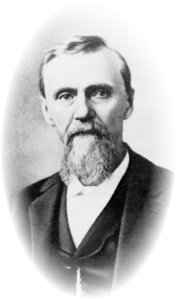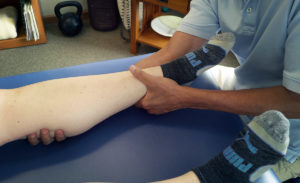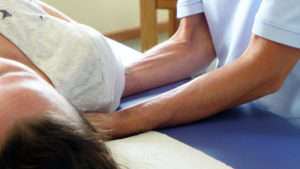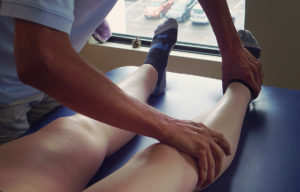Frequently Asked Questions
What is Osteopathy?
 The first osteopathic school was opened in 1892 in Missouri. The founder of that school, Dr. Andrew Taylor Still, was a medical doctor who had developed a system of manual manipulation. The school admitted men and women, with the focus being on using manual manipulation to treat all manner of musculoskeletal issues and a wide variety of medical problems.
The first osteopathic school was opened in 1892 in Missouri. The founder of that school, Dr. Andrew Taylor Still, was a medical doctor who had developed a system of manual manipulation. The school admitted men and women, with the focus being on using manual manipulation to treat all manner of musculoskeletal issues and a wide variety of medical problems.
From the beginning, the basic premise was that the body is intelligent and self-healing when given the help it needs. The help was focused on relieving impediments to healing, often around the improvement of blood flow by freeing up the soft tissue of the body.
By the 1930s, and especially the 1940s, there was a strong push towards improving the level of standard medical training, with manual medicine integrated in deeply within the teaching of the curriculum. By the mid 1950s, D.O.s were being fully licensed on a par with M.D.s.
Fast-forwarding to today, the medical school training that a D.O. gets is very similar to that of an M.D., with a few significant differences. First, from the beginning, many D.O. students are oriented more toward family medicine. The second big difference is that to be an osteopathic school, osteopathic manipulative medicine must be taught during the first two years of training in addition to the standard medical curriculum.
Most D.O.s complete those two years, continue their medical studies, and never look back. A small percentage of the profession continues to pursue treatment using osteopathic manipulation, sometimes in combination with standard or complementary medical care.
There are more than thirty osteopathic schools in the United States today.

What is osteopathic manipulation like?
There are many forms of osteopathic manipulation including manipulation of the bones, soft tissue including muscles and connective tissue, nerves and internal organs, as well as the cranium. Every practitioner tends to focus on one or several of these forms. My own mix combines cranial, myofascial, neural, and visceral techniques.
The basic underlying premise in all of these forms of manipulation as I use them is that the body is intelligent and generally knows what it needs to heal itself. A lot of my work is to listen through my hands to what the body wants to do to regain freedom and balance. The skill and the art is to have a felt sense of what is needed and what order is best in which to do things.
The work is fairly direct. You will know that you are being treated. It is relatively gentle and suitable for all ages. The youngest I have treated is a newborn moments after birth, and the oldest was close to 100. You will usually know pretty clearly after 2 to 3 sessions if I can help your condition.
Initial treatments are commonly about 40 minutes, with follow-ups typically running about 25 minutes. Spacing is commonly about 7-14 days between visits.
Does Dr. Hruby act as a primary care doctor?
Dr. Hruby does not act as a primary care doctor, generally speaking. It is good to have a relationship with a doctor who has direct connections to specialists and hospitals so that, should that need arise, you will have someone with whom you can work and with whom you are familiar.
What techniques and treatment modalities does Dr. Hruby use?
Every osteopathic physician uses his or her own mix of techniques, often developing a very unique style of work. I mostly work with the soft tissues of the body, trying to lengthen out shortened areas and softening up areas that are thickened or hardened. If bones are displaced somewhat, working the soft tissues will help them to come back to a better position. When you work this way, helping the body to find its own way back to a more normal balance, there is often more likelihood of having that change hold.

I have an extensive background in cranial osteopathy. My training in this work began in 1979. While still in school, I spent considerable time with Lou Hasbrouck, D.O. in his office learning directly from him. Some of my original teachers were direct students of the founder of cranial osteopathy, William Garner Sutherland, D.O. Later, I studied very extensively with Jim Jealous, D.O. and many other practitioners of osteopathy.
I work with visceral and neural manipulation, using techniques developed by Jean Pierre Barral, D.O., and Alain Croibier, D.O., both French osteopaths. These techniques are especially helpful for internal organ issues and problems with nerves, nerve irritation and pain.
I went through an 800-hour training in the Feldenkrais Method®. Though I do not do dedicated Feldenkrais lessons, this way of thinking about the body informs my work every day. So often it is our habitual way of doing things that gets us in trouble. Feldenkrais was brilliant at seeing these patterns in action and teaching people to move in a different, more balanced way.
I have had a longstanding interest in diet and nutrition, having studied this area of medicine extensively since starting my practice over 35 years ago. My orientation is towards real food, meaning food that is minimally processed, with judicious supplementation where needed. All of this ties into my equally longstanding interest in functional medicine, natural hormone replacement, and exercise to promote healing.
 While I make no claims about being trained in psychology, I have had a very strong interest from the beginning in how what we think and feel has effects on the body. Pain is very often connected to past physical or emotional trauma. It is often connected to habitual ways of thinking and feeling. These issues sometimes come up with work on tissues that are chronically stuck. The idea is to at least develop an awareness of the connection between how we feel emotionally and what we feel physically. They are often a single piece.
While I make no claims about being trained in psychology, I have had a very strong interest from the beginning in how what we think and feel has effects on the body. Pain is very often connected to past physical or emotional trauma. It is often connected to habitual ways of thinking and feeling. These issues sometimes come up with work on tissues that are chronically stuck. The idea is to at least develop an awareness of the connection between how we feel emotionally and what we feel physically. They are often a single piece.
I continue to have an interest in homeopathy. Because there are a number of very good full-time homeopaths in the Minneapolis-St. Paul area, I tend to limit my prescribing in this area to more acute situations.
What are your fees?
Initial visits for osteopathic care includes both exam and treatment.
- Initial new patient visits are approximately 40 minutes and cost $225-$235
- Occasionally a new patient visit is 25 minutes and costs $140-$150
- Follow-up visits are approximately 25 minutes and cost $140-$150
- Occasionally follow-up visits are 15 minutes and cost $75
- Initial Medicare visits are approximately 40 minutes and cost $156
- Follow-up Medicare visits are approximately 25 minutes and cost $124
I have a young person’s rate for adults under the age of 30 who are emancipated, that is, not receiving help from parents. The rate is a bit more than half the normal adult rate.
What Insurance Do You Take?
Dr. Hruby is out of network for most insurance plans. Most patients on Medicare are covered.
Payment
Dr. Hruby asks that patients pay at the time of their visit including those on Medicare. Insurance forms are submitted electronically through our office, and usually any reimbursement is sent directly back to the patient.
Does Dr. Hruby do craniosacral therapy?
Cranial osteopathy was developed by William Garner Sutherland, D.O. He attended the original osteopathic school in Kirksville, Missouri, learning from the founder of osteopathy, Andrew Taylor Still, M.D., and others. While in practice in St. Peter, Minnesota, he developed a way of working with the cranium that was unique to the profession. In the 1940s he began to teach these skills. He died in 1954. In my own training, I learned from a number of his direct students.
Craniosacral therapy is a variant of cranial osteopathy developed by John Upledger, D.O. Dr. Upledger began to teach anyone who was licensed to touch others, teaching physical therapists, massage therapists, physicians, chiropractors, and others. He formed the Upledger Institute to further his work.
What is the difference between an osteopathic physician and a chiropractor?
There are significant differences in the training of osteopathic physicians and chiropractors, reflecting the level of licensure. During their training osteopathic physicians spend a significant amount of time in a hospital setting learning various aspects of internal medicine, participating in surgery, obstetrics, and pediatrics.
In terms of the manipulation skills, there can be some similarity, though this depends entirely on the interest of the practitioner and on the specific manipulative training received.
What ages does Dr. Hruby treat?
Dr. Hruby treats all ages.
How long has Dr. Hruby been in practice?
Dr. Hruby has been practicing since 1982.